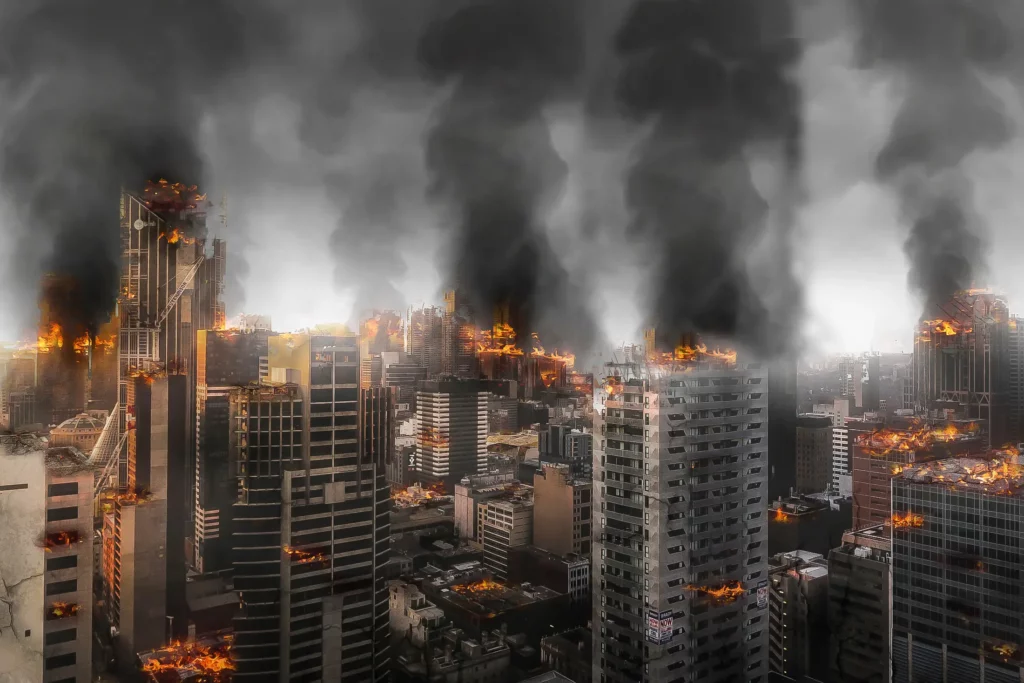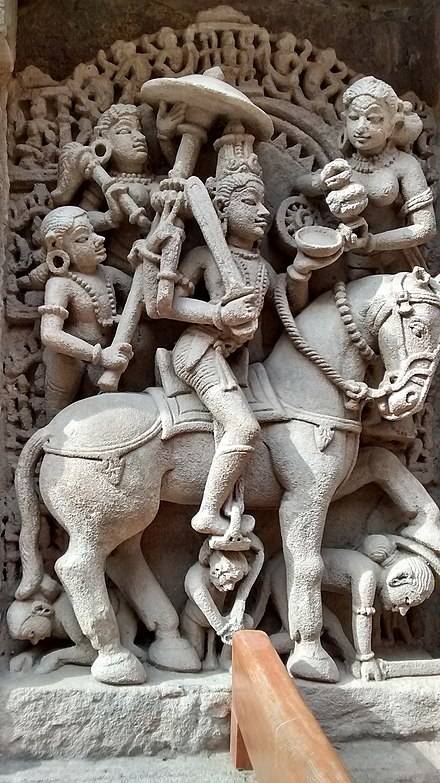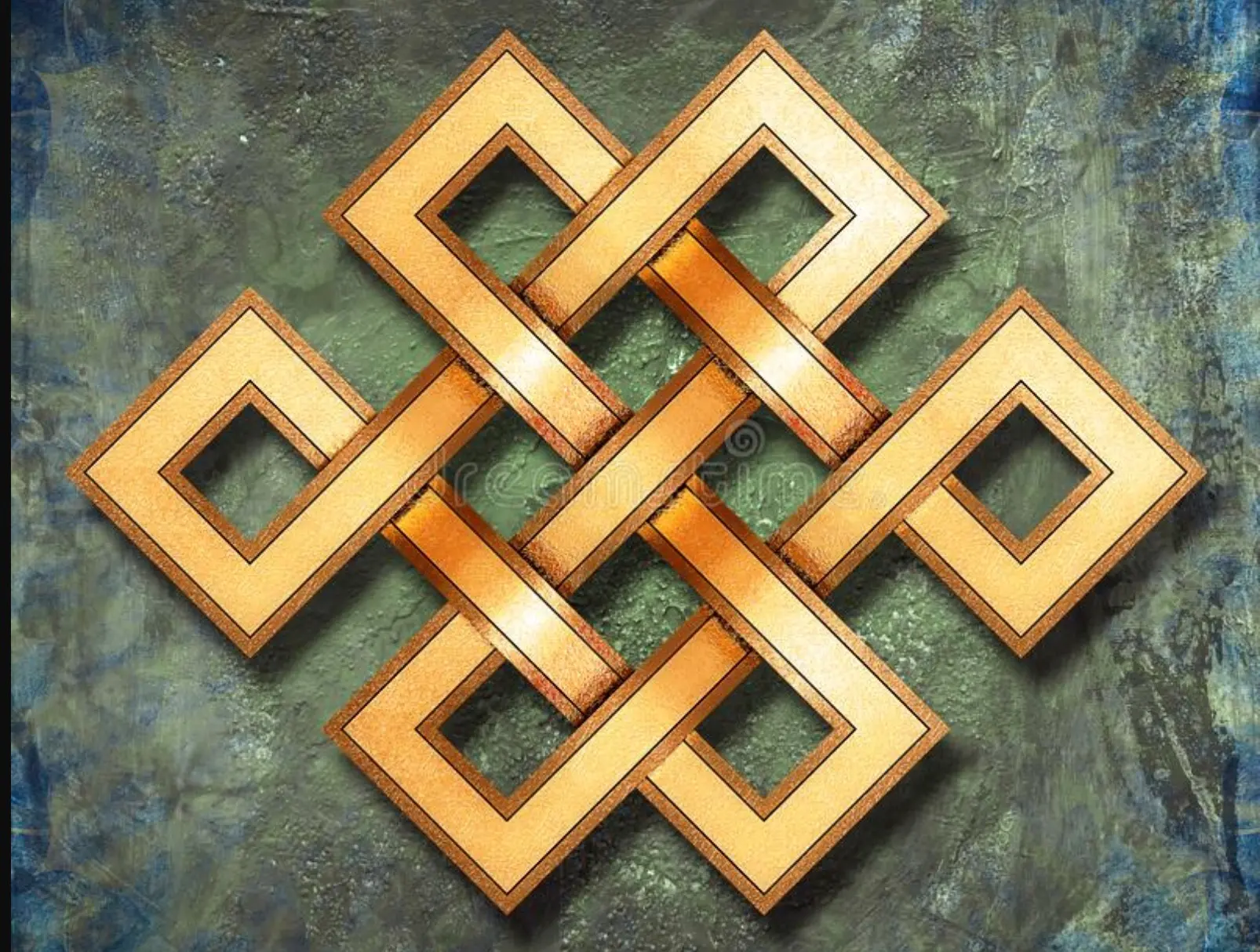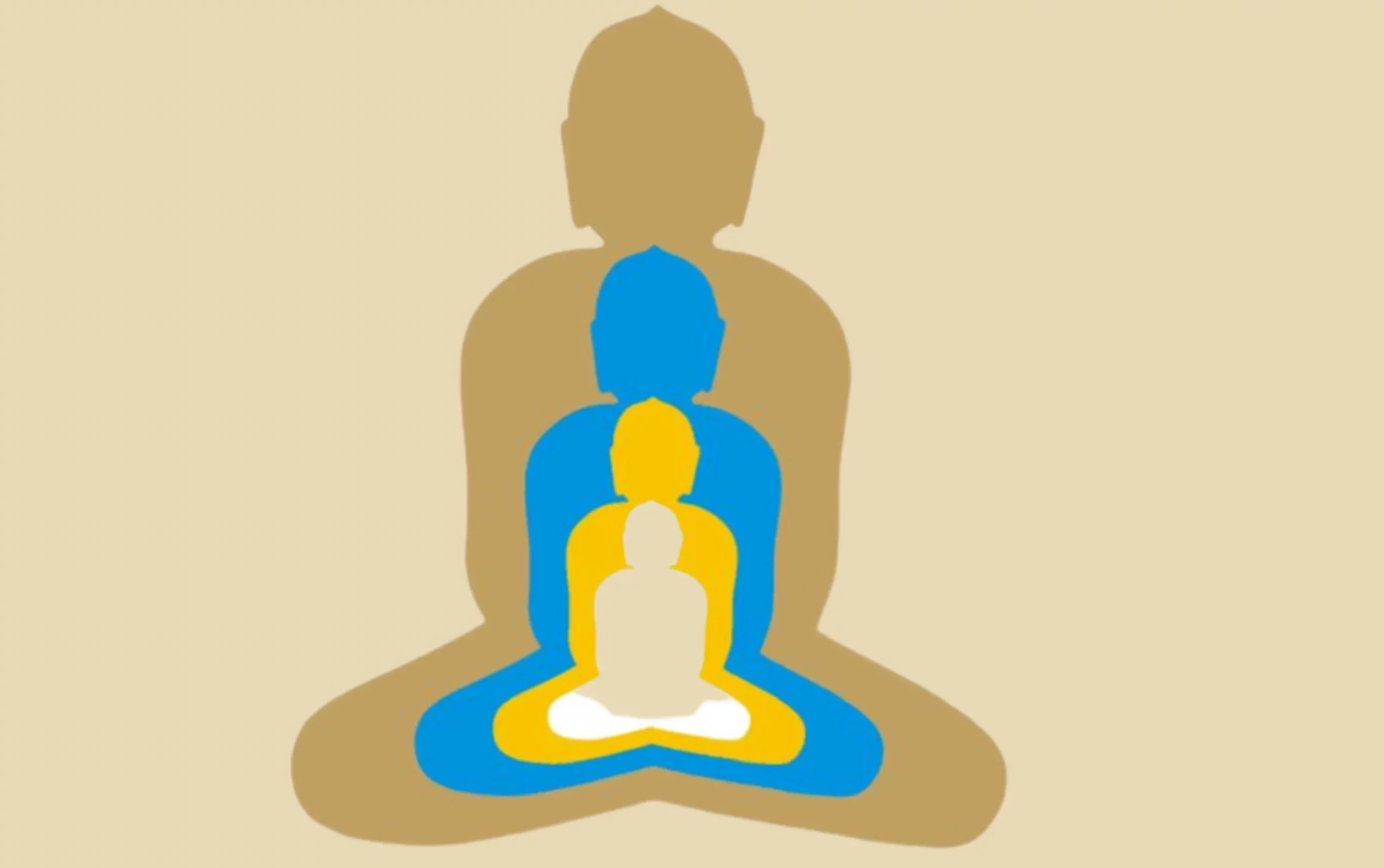The birth of the universe is a captivating and enigmatic subject that has been studied for centuries, yet the exact cause of its creation remains unknown. The Big Bang theory offers some insight, but ongoing uncertainty and debate among scientists weaken its credibility.
Where science fails, religion takes over. Every demographic in the world has its own interpretation of the creation of the universe. Many creation mythologies suggest that the universe was born out of an Abyss that created deities in the form of Chaos, Night, Earth, and Sky. Each of the deities performed their respective duties, resulting in the formation of the universe. Other areas submit simpler explanations, stating that it was their deities who created the universe.
Unlike most creation myths, the birth of the universe is discussed differently in Hinduism. While there is a generally accepted creation myth involving Brahma and Vishnu, the timeline and progress of the universe are far more intricate. According to Hinduism, the universe exists in cycles. With each cycle, the universe is destroyed and reborn again. Brahma, the creator, forms the universe, Vishnu preserves life, and Shiva the destroyer, inevitably destroys the universe, once life strays toward evil.
Ancient Hindu scholars devised complex units to measure the time frame and existence of each universe. The duration of the universe is equated with Brahma’s life. The entire life of the universe is equal to one maha-kalpa (Brahma’s lifespan) which is 311.04 trillion years for humans and 100 years for Brahma. This is the definite period of life after which the universe will end permanently. Each maha-kalpa is divided into smaller kalpas (A day for Brahma) that last for 4.32 billion years. Life in the universe exists during each kalpa and perishes when Brahma’s day comes to an end.
Within each kalpa, several key events mark the beginning of a new phase. Each kalpa is further divided into various other units of time which include 15 manvantara-sandhyas (Great floods), 14 manvantaras (birth of a Manu, a man who propagates life), and 71 chatur yugas. Each chatur yuga is further divided into four yugas: Satya Yuga, Treta Yuga, Dvapara Yuga, and Kali Yuga.
If cosmic calculations are accurate, we are currently in the 51st year of Brahma’s life. Within this mahakalpa, we are in the first kalpa, the 28th chatur yuga, and the 4th yuga which is the yuga of Kali.
The Four Yugas
The cycle of the four yugas is a fascinating concept in Hinduism that has drawn a lot of attention in recent years. The four yugas, Satya, Treta, Dvapara, and Kali Yuga are all defined by their characteristic features and quality of life. The morality of the four Yugas is often symbolized by Dharma’s bull. With the arrival of each yuga, the bull loses one leg showing the decline in people’s personal dharma.

(Public Domain)
Satya Yuga
Satya Yuga is the first and the purest of all four yugas. Lasting for 1,728,000, it is four times longer than the Kali Yuga and is an age filled with dharma, devotion, and righteousness. Societies in the Satya Yuga thrived as there were no social evils to inhibit their growth. This highly utopian society possessed only pious individuals and there was no room for human sin.
Treta Yuga
After the end of the Satya Yuga, Dharma’s bull lost one leg. Morality in the Treta yuga was still much higher compared to the present age. Treta yugas last for 1,296,00 years, three times the length of the Kali Yuga. This age witnessed three of Lord Vishnu’s incarnations in the form of Vamana, Parashurama, and Rama.
Dvapara Yuga
Dvapara Yuga is the third age in the Hindu cosmic calendar which witnessed the battle of Mahabharata. During this age, morality further deteriorated and Dharma’s bull was left standing on two legs. Social stratification and greed crept up into the minds of people as more and more individuals shifted towards Adharma. This age lasted for 864,000 years and ended with the demise of Krishna.
Kali Yuga
The titular Kali Yuga is the fourth stage where human morality hardly exists. Ancient Hindu scriptures claim that Kali-yuga is the worst of the four yugas, where life on earth is plagued by sin and corruption. Material greed and jealousy govern the life of people as they struggle for inconsequential achievements in a godless world.
The Beginning of Kali Yuga
The age of Kali began when Krishna, the tenth avatar of Vishnu left earth and assumed his throne in Vaikuntha. According to calculations made by Indian mathematician Aryabhatta, this happened in 3102 BCE which is 5122 years ago as of 2021 CE. Kali Yuga began at midnight on the 18th of February, 3012 BCE. Hindu cosmic calendars state that the Kali Yuga will last for a total of 432,000 years and end during the year 428,899 CE.

Scriptures and myths have identified Balka tirtha, a pilgrimage in modern-day Gujarat as Krishna’s place of death. A board placed at the temple at Balka mentions the exact date and time of Krishna’s departure to heaven.
An Age of Darkness
The name of the age has been derived from the name of the Gandharva demon Kali, who is known to propagate confusion, fear, and suffering. Scholars began speculating about the nature of Kali Yuga far before Krishna’s demise at the end of the Dvapara Yuga. Learned sage and author of the Mahabharata, Veda Vyasa made several predictions about the Kali Yuga, most of which explains the lamentable nature of human life. Unfortunately, many of his predictions have come true as the world has plunged into darkness. In comparison to the previous yugas, social evils thrive within the age of Kali, destroying spirituality and morality within mankind.
Obsession with Material Wealth
One of the first predictions made by Veda Vyasa that has become a reality was mankind’s unhealthy obsession with wealth. The Srimad Bhagavatam states that “In Kali Yuga, wealth alone will be considered the sign of a man’s good birth, proper behavior, and fine qualities. And law and justice will be applied only on the basis of one’s power.”
Trends in recent history suggest that this prediction is more accurate than ever. In the increasingly capitalistic society of the 21st century, the rich hold all the power which exempts them from the due process of law. While on paper, the rule of law is the same for billionaires and beggars, it is the latter who suffer unconditionally.
Mankind’s irresistible urge to acquire more wealth has also led to countless conflicts on various scales. In order to fulfill their personal desires, people are willing to sell their souls. In Kali Yuga, loyalty and wealth go hand in hand. Even the most trusted and loyal servants will abandon their master for greed. On a much larger scale, materialistic desires have fueled countless wars, famines, and destruction. Obsessive greed and desire have been responsible for almost every social calamity in the past 500 years.
Not only have greed and avarice corrupted modern society, but they have also pushed humanity toward the dark side. Spirituality and mental wealth are hardly given any importance as the modern consumer strive to fill his bank account to the brim.
Superficial Lust over Deep Relationships
Another trademark characteristic of the Kali Yuga is the increase in superficial lust among men and women. Veda Vyasa predicted this trend and stated that “Men and women will live together merely because of superficial attraction, and success in business will depend on deceit. Womanliness and manliness will be judged according to one’s expertise in sex, and a man will be known as a brahmana just by his wearing a thread.”
While the last statement is specific to a single group of people, the predictions involving the superficial nature of love are generally true. With almost 50% of all marriages in the US ending in divorce, it is evident that lust and exterior beauty are the prime factors considered when choosing a partner.
Kali Yuga has also witnessed an increase in sexual crimes. During Satya Yuga, no laws or norms were dictating the sexual and personal lives of people. Individuals formed respectful consensual relationships while upholding the integrity of sex. In the Kali Yuga, however, basic sexual decency is no longer upheld. Cases of forced sexual crimes and rapes are skyrocketing as people lose all sense of morality in their pursuit to achieve shallow orgasms.
Disease and Calamity
Humanity’s obsession with wealth and matter has not been without its consequences. Intense exploitation of natural resources has already altered the state of the environment and manifested in the form of devastating natural disasters and calamities.
Every decade, we are faced with new challenges that pose a threat to all life on earth. From global warming and climate change to carbon emissions and lack of drinking water, the list of impending apocalypses is endless. Despite being warned about these challenges, humanity is oblivious to the damage they have caused to the planet.
In fact, we have already begun to experience the gradual breakdown of the planet. The melting of the glaciers, the forest fires in the Amazon, the heat waves across Canada, and the floods in Germany are all signs of how nature tends to reciprocate mankind’s cruelty. Moreover, despite the increased access to healthcare across the globe, new diseases have periodically surfaced within our society.
As we move further into the Kali Yuga, people on the planet will face a whole new set of challenges as the resources that were once found in abundance begin to dwindle. Resources such as petroleum and fossil fuel will be the first to disappear as many corporations continue to purge the earth without considering their depleting levels. Most countries have already started predicting their zero days, a day when people will not have water to drink.
Demolition of Social Values
Perhaps the worst consequence of the grave Kali Yuga is the deterioration of society. One of Veda Vyasa’s most prominent predictions states that “Religion, truthfulness, cleanliness, tolerance, mercy, duration of life, physical strength and memory will all diminish day by day because of the powerful influence of the age of Kali.”
Not only did Vyasa predict extreme environmental changes, but he was also certain that even the most fundamental human values will not be upheld in the Kali Yuga. Unfortunately for us, this prediction has proven to be true as well.
Social morality in the Kali Yuga has reached disturbingly low levels as individuals stray away from the truth and live on the principles of deceit and treachery. People are ignorant of the immense suffering in the world and tend to work toward their own selfish needs. Social tolerance has dwindled into oblivion as people discriminate against people of different religions, castes, races, and nationalities.
Rather than physical labor, people in Kali Yuga rely on their wits to get the job done, making them physically weaker and fragile. With increased reliance on technology and machines, even the brain is no longer used to its full potential. If ancient Hindu scriptures are to be believed, then people in the Kali Yuga are duller, weaker, and more fragile than those in Satya Yuga.
The End of the Kali Yuga
Like every other thing in the universe, the Kali Yuga too will eventually come to an end. After the allotted 432,000 years, life on the planet will be unrecognizable. If predictions are to be believed, humanity will be a frail replica of what it used to be. Hunger, poverty, and crime will skyrocket as people will struggle to navigate in an apocalyptic dystopia.
Amidst the chaos and destruction, Hindu scripts believe that a warrior will emerge to take down the demon Kali. This warrior is the prophesized 10th avatar of Lord Vishnu and will go by the name of Kalki. It has been foretold that Kalki will appear on a white horse with wings and a fiery sword to free humanity from the darkest of times. Scriptures state that all Eight Chiranjeevi (immortals) will gather towards the end of the Kali Yuga to guide Kalki on his journey.

(Public Domain)
It is believed that under the leadership of the mighty Parashurama, this heroic character will bring back the Satya Yuga and help humanity achieve its former glory. With the arrival of Kalki, a major cycle of existence will come to an end and mankind will get a fresh start.
How To Overcome The age of materialism and consumerism
Many people will fail to accept the reality regarding the Kali Yuga. They may claim that there is still good in the world and believe that humanity has a fighting chance. While this assessment is fairly accurate, fighting Kali Yuga is equivalent to going against the flow of time. The arrival and occurrence of the age of Kali is inevitable. Despite the individual goodness in people, the degradation of society through systems, unions, and beliefs is inescapable.
The dwindling morality of the Kali Yuga coupled with the declining quality of life is enough to make any individual question their purpose. It is hard to comprehend that we are currently living in the worst of times and that life as we know it could have been much better.
However, being a part of the Kali Yuga does not mean that one should submit to authority and fall in line with the other atrocities of the time. Instead, the Kali Yuga presents an opportunity that was missing in the previous ages. People in the Kali Yuga have the chance to overcome the inherent darkness of the age and rise as holistic and pious individuals. In the Kali Yuga, it becomes even more important to stay in touch with one’s spiritual self and actively fight against the prevalent systematic corruption.
In order to thrive in the Kali Yuga, one must accept that society as we know it, has never suffered more than it has now. This acknowledgment alone will help humanity come to terms with the reality of the situation. Subsequently, mankind can work towards the betterment of civilization and make life in the age of Kali, less corrupt.
Conclusion
Kali Yuga is a period of spiritual crisis and materialism. However, it is also an opportunity for spiritual growth and transformation. By understanding the characteristics and challenges of the Kali Yuga, we can navigate this age with a sense of purpose and direction. It is important to remember the role of Dharma, or righteousness, in the Kali Yuga, as well as the importance of spiritual practices such as meditation and self-reflection. By following these guidelines, we can not only survive but also thrive in the Kali Yuga. Remember, this is a temporary phase, and the end of Kali Yuga leads to the dawn of a new era of spiritual enlightenment. So, keep the hope alive and have faith in the ultimate cycle of time.





